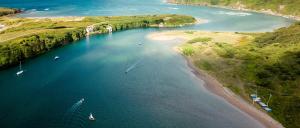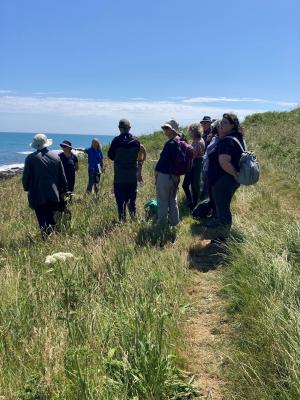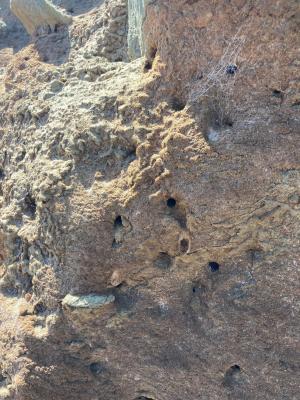
Grants
Landscape Regeneration
Life on the Edge
£15,000 awarded
A project that aims to restore population numbers of some of the UK’s rarest insects living along the South Devon coast, between Wembury (near Plymouth) and Berry Head (near Brixham).
Life on the Edge aims to help to boost local populations of 25 of the UK’s most threatened invertebrates, and a wide range of other species from plants to bats and birds. A recent review of Devon’s Special Species revealed that the greatest concentration of threatened species in the county is found on the South Devon coast; including the Six-banded nomad bee which is now only found at Prawle Point. Urgent action is required to prevent it going extinct.
The species associated with South Devon’s coastal cliffs, slopes, and wildflower-rich clifftop grasslands have declined due to habitat loss, degradation, and lack of connectivity – being lost to arable crops, or grazing animals. In many places the clifftop grasslands are now limited to a thin strip, and this coastal squeeze is impacting wildlife.
Life on the Edge will deliver targeted habitat restoration and creation at five key coastal biodiversity hotspots – expanding and enhancing them to protect remnant populations of the 25 threatened species and enable their recovery.
Practical habitat interventions coupled with landowner buy-in and conservation covenants will ensure the habitats are managed for the long term – providing a strong legacy for the project.
Securing positive relationships with landowners and working with local people will create a ripple effect across the South Devon coastal landscape making it an exemplar of how to deliver national invertebrate conservation and nature recovery networks.
Life on the Edge is a collaborative project being developed and delivered by Buglife, South Devon AONB, National Trust, Torbay Coast and Countryside Trust, and local farmers, landowners, and communities. It is funded primarily by National Lottery Heritage Fund and Devon Environment Foundation.



